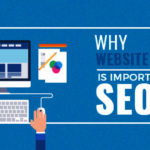A great website is the foundation to SEO strategy. After all, all SEO efforts are towards getting traffic to your website and converting visitors to customers.
It is also usually the end of the sales funnel where your convert your leads into paying customers. Imagine driving all the hard earned traffic to a site that does a poor job in converting those visitors. That would be a pointless effort, right?
So let’s look at 6 website factors that affect your SEO efforts:
1. On page SEO
One of the ways to drive more traffic to your website is by ranking higher in Google for keywords relevant to you. This is why it is important to optimize your website for search engines. Getting more organic traffic to your website will boost your conversions. Here are some tips on on-page SEO to rank higher:
- Tip 1: Update the page title, meta descriptions and alt tags in your website
- Tip 2: Internal link-building
- Tip 3: Make sure you target relevant keywords and have relevant content only
- Tip 4: Update your site regularly with fresh and high quality content.
You can install Yoast SEO plugin if your website is powered by WordPress. We will talk about more plugins to improve your site in the last point.
2. Site loading speed
Visitors have shrinking attention spans and expect a site page to load within 3-5 seconds. According to research by Akamai, a one second delay in page load can reduce the conversions on your site by 7%.
Tip: Go to WebpageTest to test your website’s page load speed. This site gives you a detailed report on time taken to load each file.
If your site is slow in loading it could be because of server location and size, excess coding, large image files or unnecessary redirects.
3. Shareability
Social media is one of the top drivers of traffic in SEO. It also generates targeted visitors that are easier to convert. Website content must be easily shareable on social media to support SEO. Here are three ways to ensure this.
Tip 1: Use Visual content such as images, infographics and videos. Visual content is 3x times more likely to be shared. Facebook engagement is highest for posts with photos and videos.
Tip 2: Optimize your images and meta descriptions for social media. Check how the image looks in a social media post. Are the dimensions right? Meta description is the page title and description that shows up in the post. Tweak it to include keywords and interesting lines.
Tip 3 : Have social sharing buttons installed in your website to allow one click sharing and commenting on your content.
4. Web design
The transition for your customers who come to your site from emails, social media or paid ads must be smooth. This means that your web design must be in line with rest of SEO efforts and should give a consistent experience.
Web design is reflected in the website layout, color scheme, pathways of your site. As you may have guessed it drives user experience and branding of your site. It also determines the functionality of your site or how easily visitors can complete tasks they are on the site for.
Tip 1: Optimize your site for mobile devices. Visit Browserstack to check how your site looks on various devices
Tip 2:Use color patterns and themes that reinforce your branding
Tip 3: Keep the layout simple, intuitive and logical
5. Content
This is perhaps the most important website factor that affects SEO.
Content is what attracts new visitors and keeps them coming back for more. You should offer quality content if you want to succeed in your SEO efforts.
Tip: Research deeply on what your audience wants to read and watch. Develop content that solves their needs not yours.
6. Tools
There are many tools that help you to enhance your website. Some of them increase ranking others help you keep an eye on your traffic. Here are some website tools you must use to support your SEO:
1. Get free analysis of your website on Ahrefs and Similar web. You can see the technical glitches, traffic sources and keywords on your website and get a detailed report
2. Install Crazy Egg to know which features on your site are working and track visitor mouse movements . You can also use OptinMonster.
3. Install Hello Bar plugin to convert visitors into leads. This pop up a form to get email IDs or sign up for offers.
4. Install Google Analytics to get key metrics on your website.
5. Install Yoast SEO to create search engine optimized content
6. Schedule your WordPress post for social media with BufferApp. This will save a lot of time and give out content consistently.
Your website is your owned asset that converts leads into customers on the internet. Use the tips shared above to make sure it does the job of supporting your SEO efforts.







